How to Prune Conifers: Ultimate tree care guide for beginner gardeners
 Lee Burkhill: Award Winning Designer & BBC 1's Garden Rescue Presenters Official Blog
Lee Burkhill: Award Winning Designer & BBC 1's Garden Rescue Presenters Official Blog

Pruning conifers is an essential task to maintain the health, shape, and overall appearance of your garden hedges and trees. However, there are a few major flaws when it comes to cutting back conifers without the proper knowledge, mainly resulting in dead, brown or dried-out conifer trees and hedges.
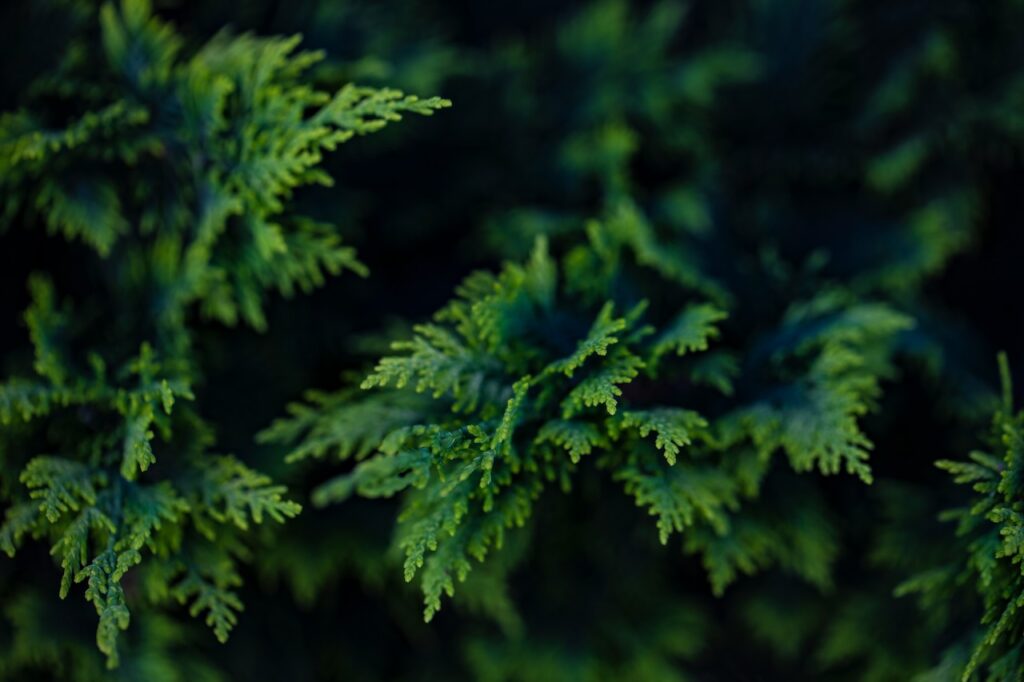
This guide is going to help explain how to cut back conifers, when to trim them, and how much to take off with your pruning sheers so you don't inadvertently end up killing your trees and hedges.
This page contains affiliate links for products I use and love. If you take action (i.e., subscribe or make a purchase) after clicking a link, I may earn some gardening commission, which will help me keep the Garden Ninja Blog free for all.
Conifers are a group of cone-bearing trees and shrubs belonging to the botanical division Pinophyta. These plants are characterized by their needle-like or scale-like leaves and the production of cones that contain seeds. They are one of the most popular plants used for hedging and trees here in the UK due to the fact they are super hardy and relatively cost-effective.
Conifers are typically evergreen, meaning they retain their foliage throughout the year.

Some common examples of conifers found here in UK gardens include:
They are widely distributed across the globe, inhabiting various climates and ecosystems, from temperate forests to alpine regions. Conifers are valued for their economic, ecological, and ornamental significance, providing timber, shelter, and aesthetic beauty in landscapes and gardens.
Conifers are also one of the easiest plant species to establish and look after, having very few nutritional requirements or care other than some yearly pruning.
The best time to prune most conifers, including hedges, is between April and August. When the evergreen conifer is actively growing, this reduces browning and enables the evergreen conifer to make a swift recovery. Unless deciduous trees and hedges, which are nearly always pruned when dormant in the Winter, most evergreen hedges, like conifers, are best pruned from Spring to Summer.
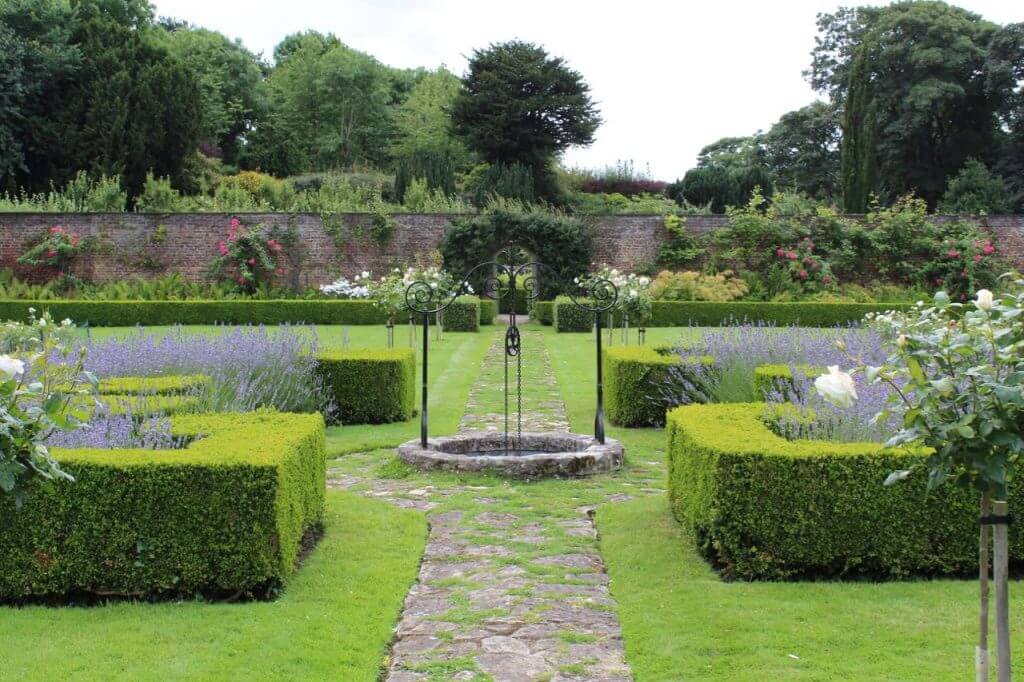
Many guides online suggest to prune conifers in winter when they are dormant. But this is wrong. Conifers struggle to recover after winter pruning, and their pruning wounds can leave them open to infection and precious water loss during the cold winter months.
Did you know that you can take my course and learn how to become a Garden Ninja yourself? Click here for details
The golden rule with all conifer pruning is to remember that most conifers will not recover if you hard prune them back to old wood. There are two exceptions that can be hard pruned and recovered, which are Taccus (Yew) and sometimes young Thuja (Cypress).
For the most part, whenever pruning conifers, only remove fresh green growth, not wood and avoid cutting back to old, brown or leafless wood as the conifer will not regenerate green leafy growth from these cuts.
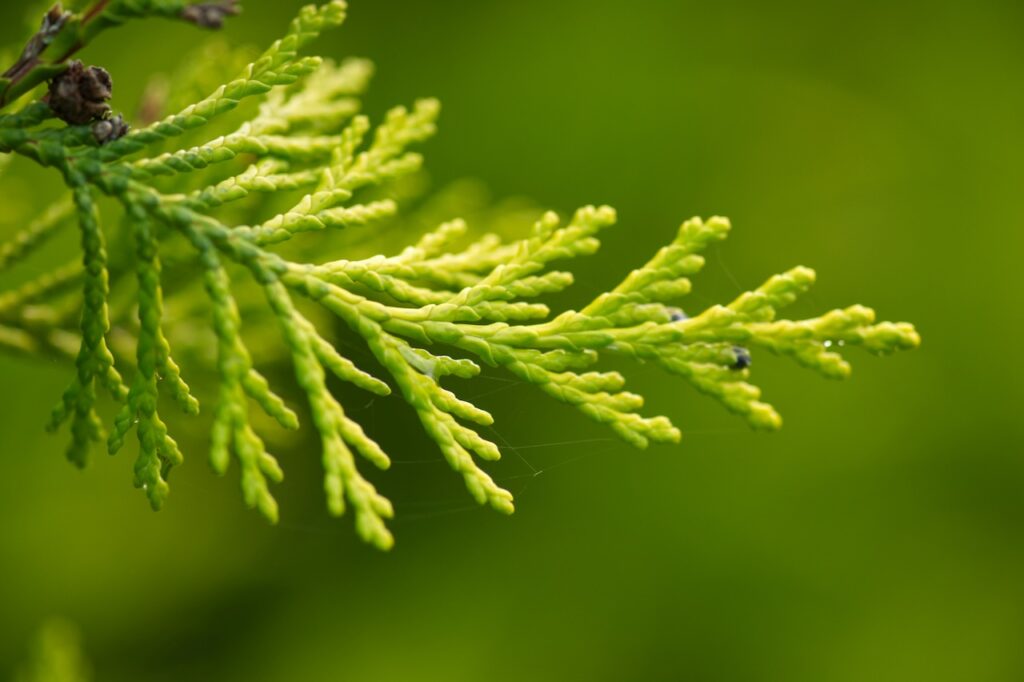
Before pruning, it's crucial to understand how conifers grow. Conifers typically have a central leader (main trunk) with lateral branches arranged in whorls around the stem. Conifers also have apical dominance, meaning that the top of the tree's growing stem dominates all other growth. If you cut this off by topping out or off the tree, then the growth does not flow back down as readily to side shoots like other trees and shrubs.
The apical meristem (the main tip of the plant) is the region in which actively dividing cells are located at the tip of the main stem or shoot. The apical meristem produces hormones, particularly auxins, which inhibit the growth of lateral buds located below the terminal bud (at the tip of the main stem). As a result, the terminal bud continues to grow upward while the growth of lateral buds is suppressed.
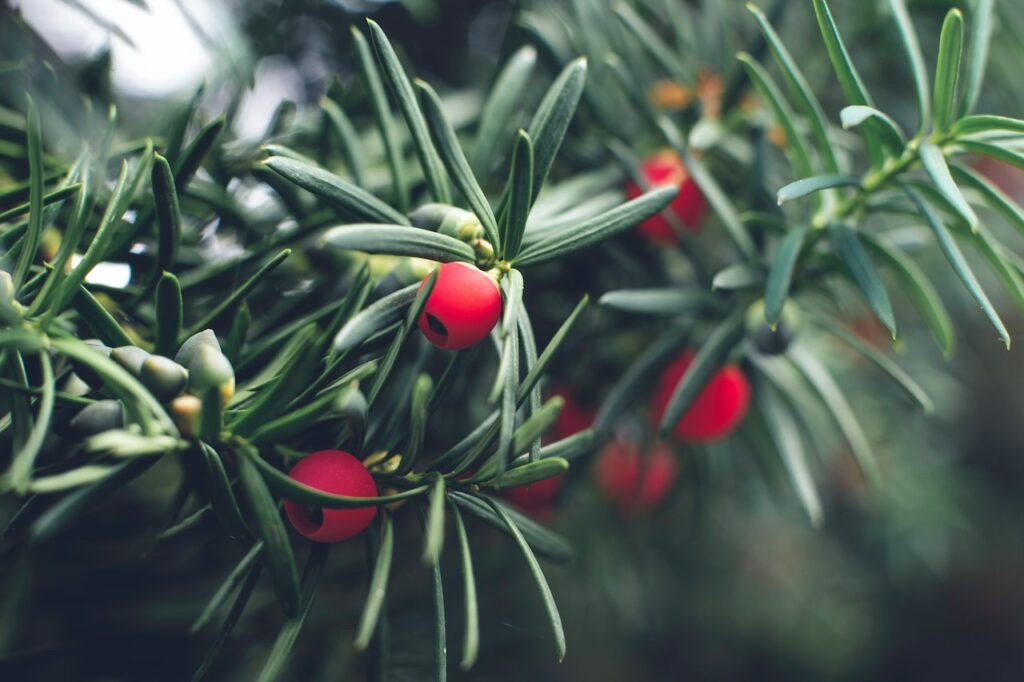
So once your conifer tree or shrub has reached its desired height, removing the top leader then prevents any more vertical growth. This is why when a mature conifer is drastically pruned, the top of the tree or hedge remains bare and awkward for the rest of its days. It won't regenerate new growth on old wood or replace the main lead stem once removed.
It also means that cutting the top off conifers won't cause them to bush out much due to this dominance. Understanding this growth pattern helps you determine which branches to prune to maintain the tree's natural form.
The first thing to do is ensure you're using the right tools and method to cut and trim your conifers. Use sharp, clean pruning tools such as hand pruners, loppers, and pruning saws. Ensure that the tools are sanitized to prevent the spread of disease between trees.
Make sure that whatever tools you use can cut through the fresh green growth easily. If your hedging shears, secateurs or hedge cutters are not sharp or well-maintained, they will just tear through the conifer, leaving brown edges and a ragged messy cut. All of which leads to infection and stress on your conifer trees.
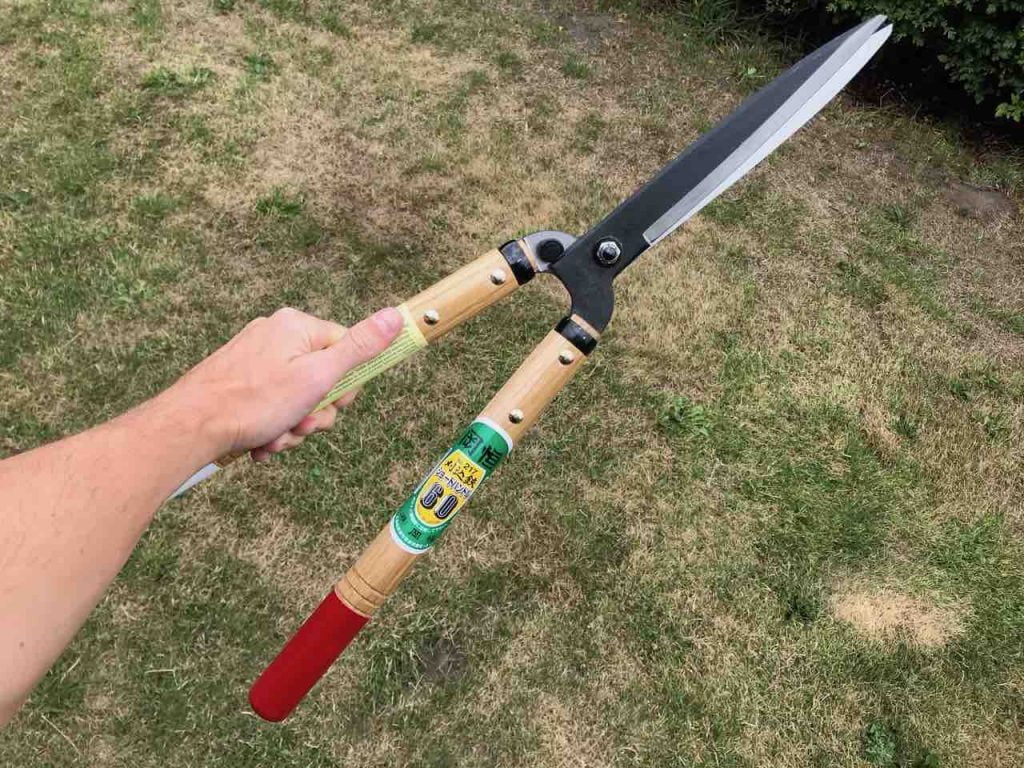
Hand sheers are great for smaller hedges, whereas large and long conifer hedges should be cut using electric hedge trimmers for the most efficient and clean cut possible.
Before making any cuts always check for nesting birds, especially from April through to August. In fact, there's even a law, the Wildlife and Countryside Act 1981, which states that no bird's nests should be destroyed between March and August. However, if no birds are nesting in your hedge, then you can cut them.
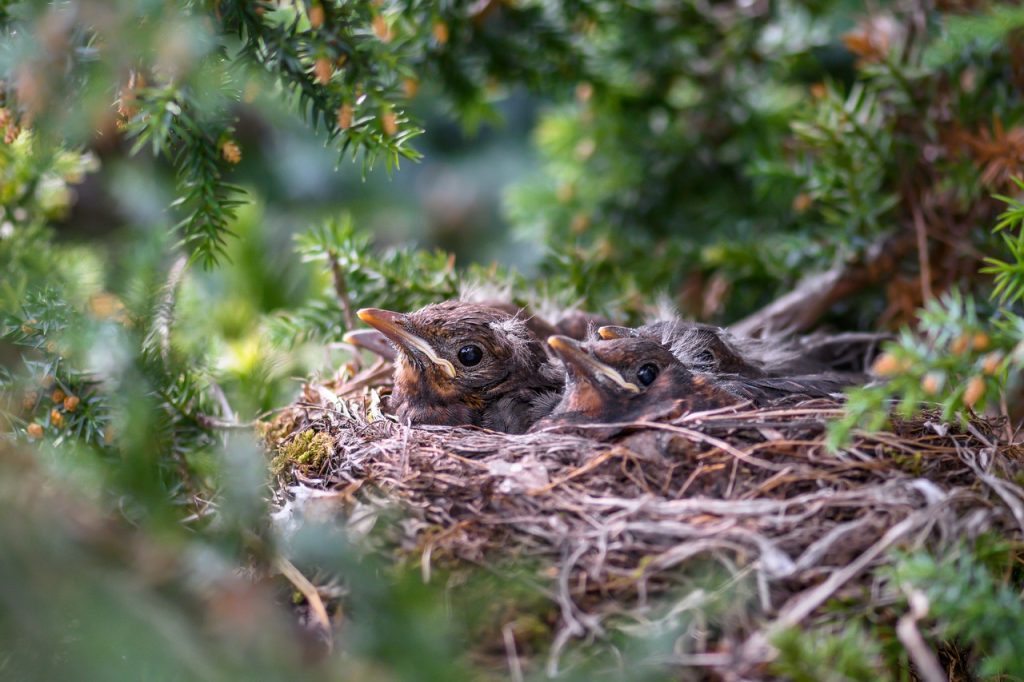
To check, watch the hedge the days and weeks before you cut to see if birds are regularly flying in and out of them. You can also part sections of the hedge and have a good look during the day to spot nests or any chicks. If you find nesting birds in your hedge, please leave your hedge cutting until they have departed. Cutting them will disturb the parents and often leave the chicks abandoned, which kills wildlife and hurts the natural food chain of our gardens.
We know that cutting back to old wood is a no-no and will cause the conifer to look brown forever. Before cutting, gently pull out branches to see how much green conifer you have to cut. It's always best to take less off than too much. Once you hit old wood, that's it. That part of the conifer hedge or tree will never regrow.
Aim to cut in slow sweeping movements, arching your arms like a fan across the front/side of the hedge. This is why electric hedge trimmers are brilliant for cutting conifers, as they take all the stress out of your arms. Use the same motion across the entire hedge. Take off small amounts as you can always return for a second pass, if you try and cut too deeply at first it can be tiring on your arms and lead to uneven results.
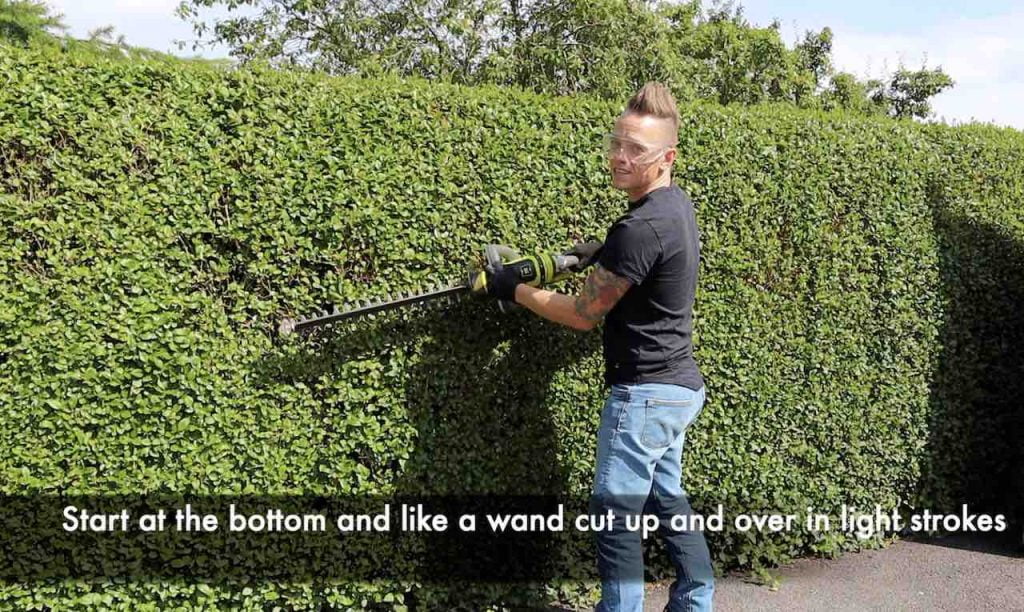
If you're aiming for a flat top hedge, then use a string line across the top of the hedge to get a perfectly straight line. Again check how much 'green' growth you have to cut back to. For more informal hedge lines, use your eye to see if they look right, and consider a baffle (where the top of the hedge is slightly narrower than the bottom), which helps protect the hedge against snowfall and weather damage.
Conifer clippings can be easily composted at home in compost bins contrary to belief. They do help acidify compost so they make a great mulch for Rhododendrons and other acid-loving plants. It can help unlock the nutrients they need in the soil by tweaking the PH when used as a top dressing or soil mulch.
After a long day of hedge cutting it can be easy to simply put the tools back in the shed until next year. However, if I can give you one piece of advice it's to clean and oil them when finished, not next year. This keeps your machinery, secateurs and pruning shears in top shape and working order. Trust me, doing it now rather than when they are rusty and covered in dirt is far easier!
Wash your tools/blades in warm soapy water, dry and then use camellia oil to keep them lubricated and prevent rust.
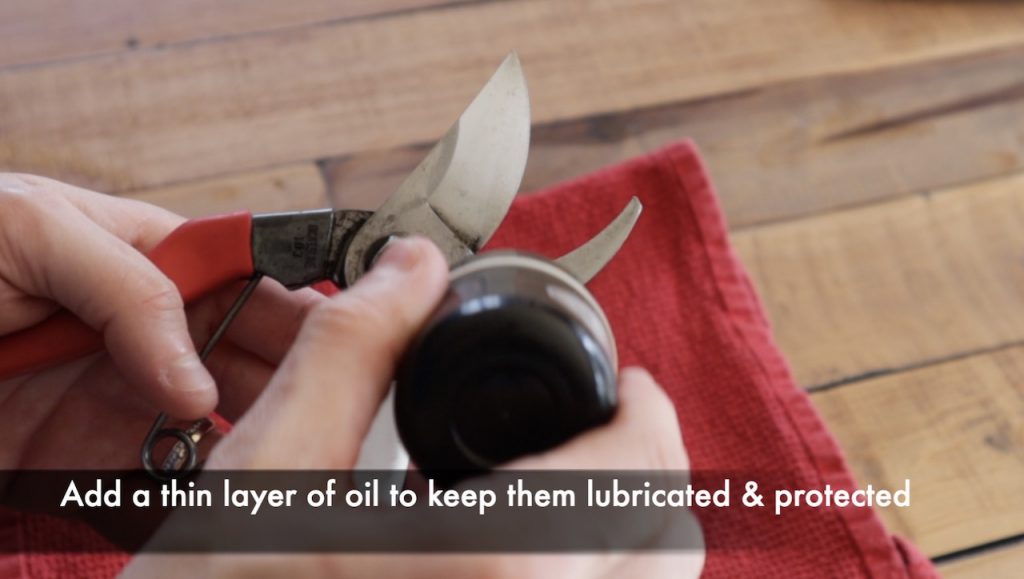
Brown conifers can cause real shock to the beginner gardener wondering what they have done wrong that their trees and hedges have suddenly started to turn brown. There are a few reasons why your conifers may be turning brown or orange. The main ones are:
Cypress aphids (Cinara cupressi) are small insects that feed on the sap of cypress trees, including Leyland cypress and other related species. These aphids can cause damage to the tree by sucking out sap, which weakens the tree and causes needle discolouration, with conifer branches turning yellow and then brown.
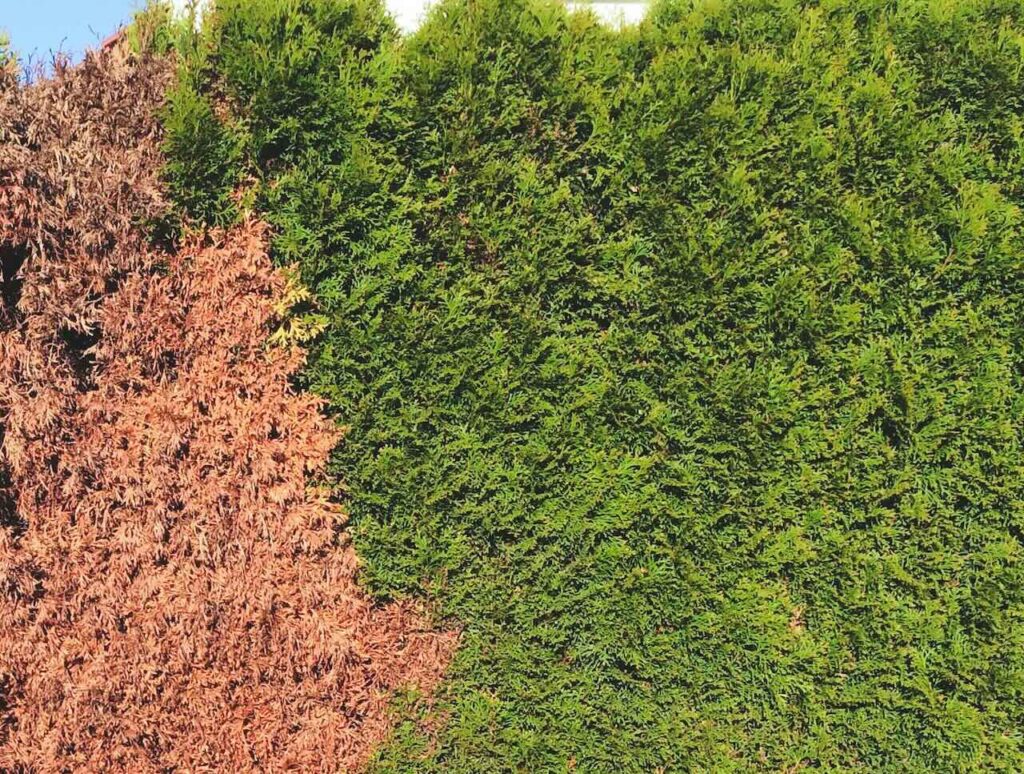
Cypress aphids cause stunted growth and, in severe cases, branch dieback. This is what can cause your conifer to turn brown in summer, even if you haven't pruned it.
Pruning back to old wood can cause your conifers to suddenly look brown and sometimes even dead. This is because hard pruning can damage conifers by causing stress and shock to the tree. Conifers typically have a limited ability to regenerate new growth from old wood, especially compared to deciduous trees.
When conifers are severely pruned, it can lead to:
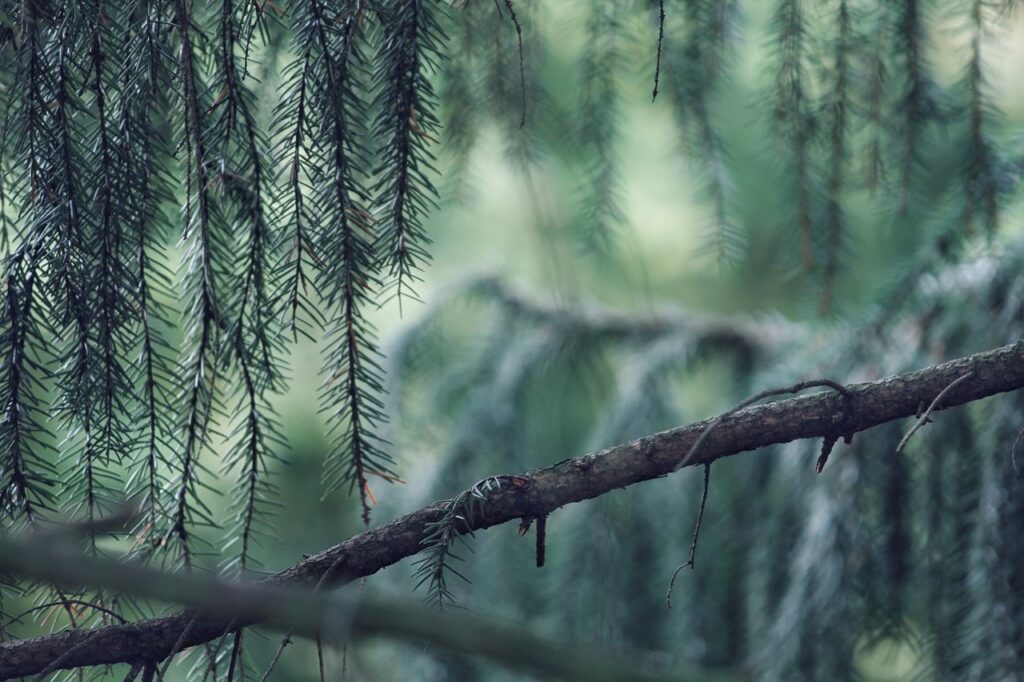
In heat waves and periods of drought, even conifers, which are usually super tough, can go into shock and dehydrate. This is especially true of hedges and young conifers. All of which leads to them turning brown and very dusty when touched or shaken. This is why it's important in really hot summer to make sure that newly planted conifers and, in particular, hedges, where competition due to plants' rootstocks being so close together can increase the chance of drought, are watered regularly until they are more mature.
Leylandii and the Leyland conifer species (× Cuprocyparis leylandii) are some of the fastest growing conifers you can buy, which is both great for quick hedges but not so good for urban areas where they grow at a rapid rate, crowd out other plants, dry out the soil and cast vast amounts of shade onto neighbouring properties.
You really need to think twice before planting a Leylandii hedge, especially if you live in an urban area, have a garden less than an acre in size or want a low-maintenance garden (the pruning itself is a real mission with Lellyandii).
The best time to prune Leyland hedges and Leylandii is April to August. Leylandii hedges and trees can need cutting 3 times a year to stop them from growing out of control or becoming absolutely huge. This is why they are a poor choice for beginner gardeners, small urban gardens or anyone without the time to properly maintain them.
Like all conifers, Leylandii will not regenerate if you cut it back to old brown wood as they are super fast growing. You need to prune them on repeat each year, usually three times, given how fast they grow!
Trim the side shoots of Leylandii in April, July and September, taking off fresh green growth only and not cutting back too hard. At most, remove up to 4 inches of fresh green growth.
Leylandii usually takes around 2-4 years to fully establish as a hedge. Once they are at their desired height, 2-3 meters maximum for most gardens then cut out each tree's main stem at the top. Cut it down by 6 inches when it reaches the max growing height. This will cause the lower branches to fill out more, leaving an evenly grown hedge. This will help stunt its full growing height, but it will still need regular pruning 2-3 times per year to keep it neat and prevent it from growing out of control.
When it comes to reducing the height of conifers, it can be tricky, especially for new gardeners. Sometimes, the conifers are so tall that you have no option but to bring in a reputable tree surgeon. The main problem with trying to reduce the conifer's overall height is that removing the top growth or main leader often then leaves an unsightly bare top to the hedge of awkwardly exposed stump on conifer trees. This is why topping out conifers early on when they reach the desired height is preferable.
If you need to reduce the height of your conifer, then the best advice is:
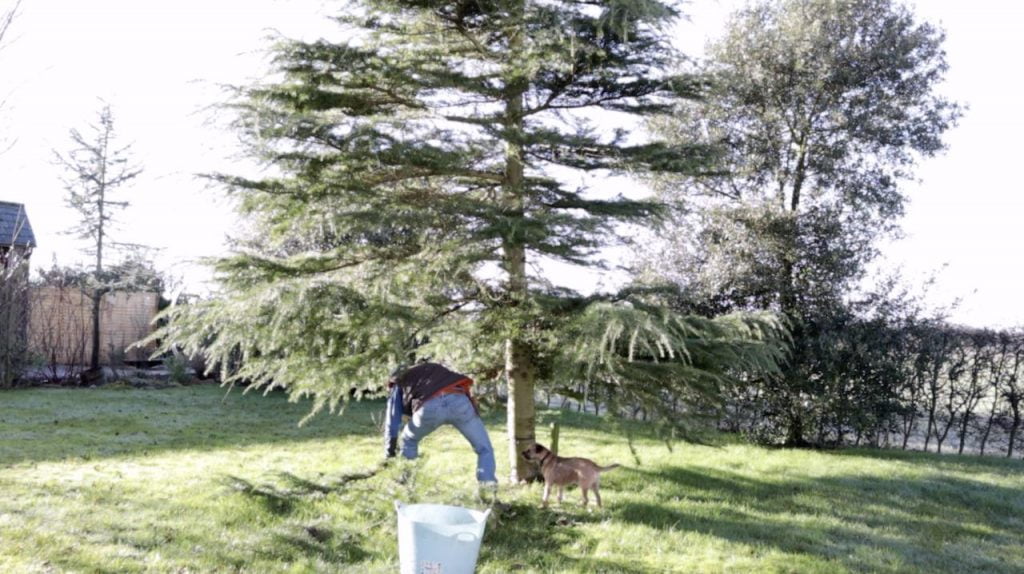
The examples below show a conifer with neat pruning cuts on a tree. These side branches have been taken off using a 'crown lift' technique to raise the canopy of these Fir trees. See how the cuts are angled so water runs off and also just and so protruding from the main stem?
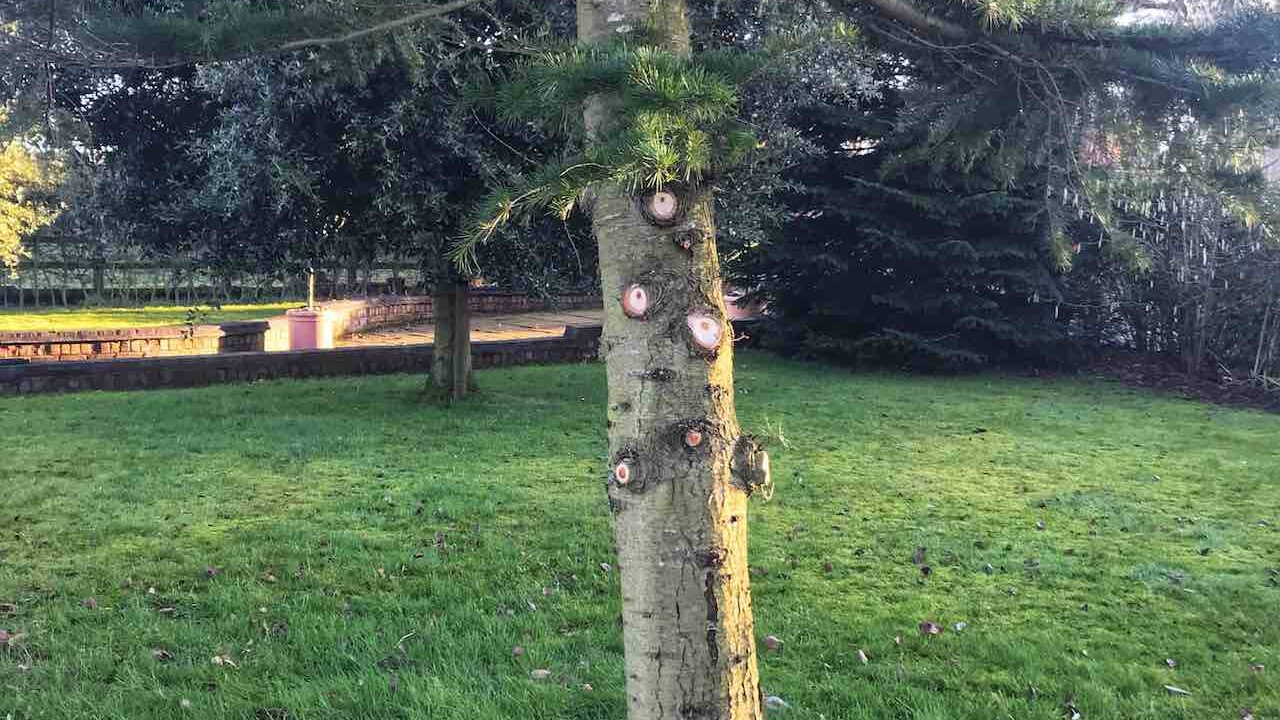
Neither of these cuts have been taken right the way back, which can damage the collar between the branch and the main trunk.
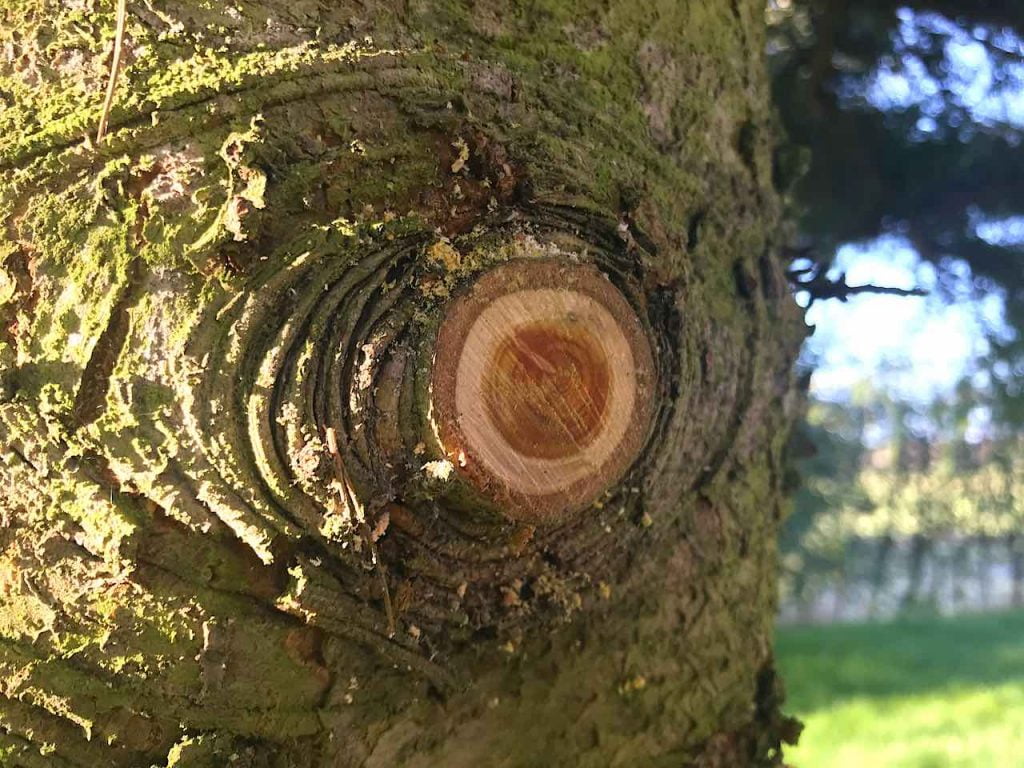
Let's look at some bad pruning cuts to see how not to cut conifers. See how below, as the cuts were made, it has torn away from the tree, leaving a 'heel'? This promotes infection and shows that a branch has probably fallen and torn away from the tree mid-cut as it has not been supported enough.
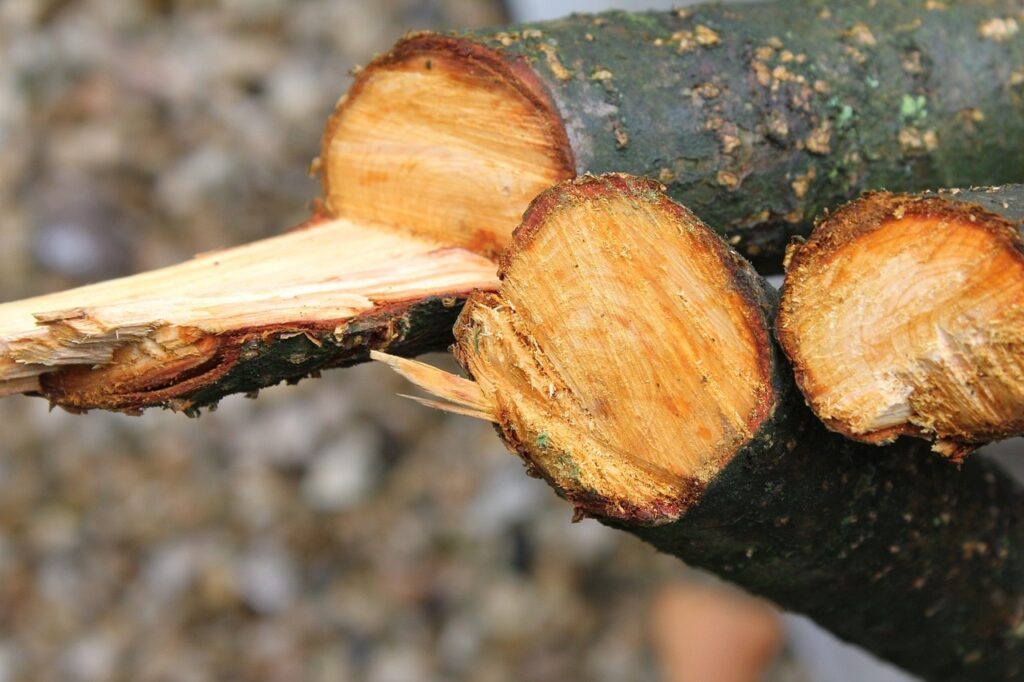
The next image shows cuts that are made leaving long lengths of exposed branches left. As we know, these will not regenerate any new growth, so they should have been taken right the way back to the main trunk instead.
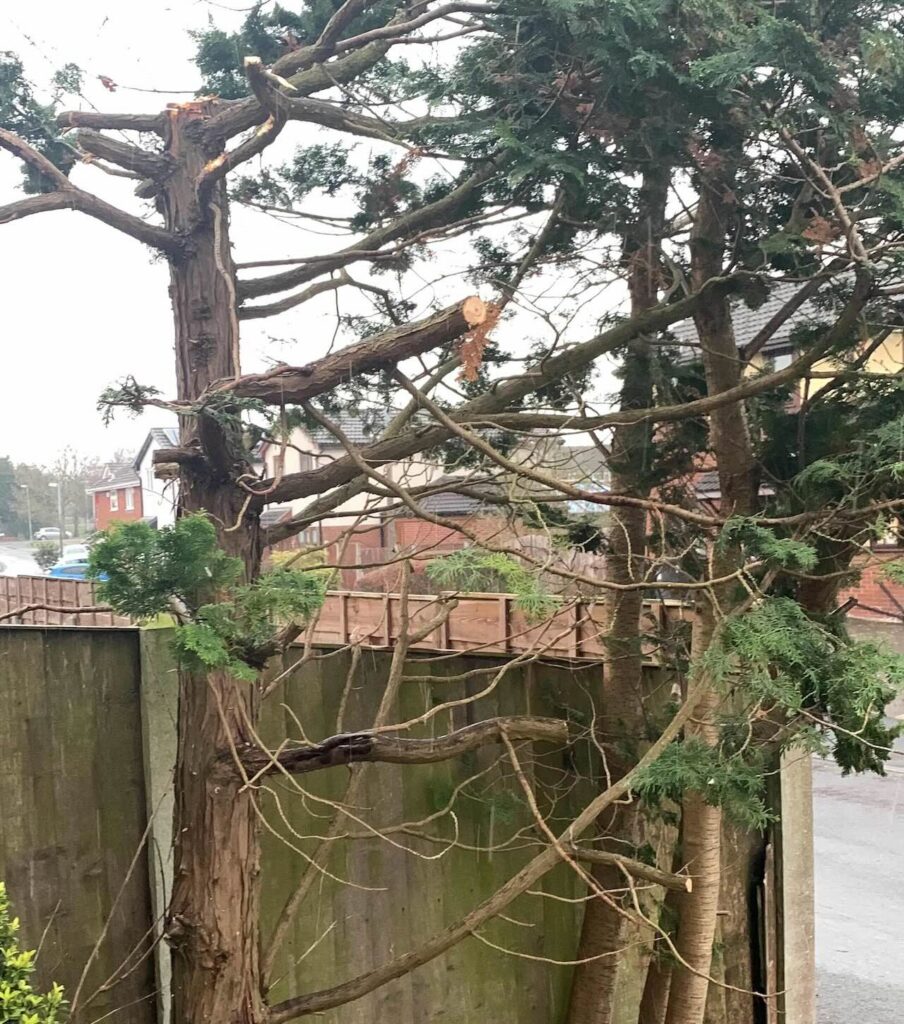
Whilst pruning conifers can seem tricky for new gardeners, once you know not to cut back into old wood and also to make your cuts from Spring to Summer, you can't really go too wrong. The trick is little and often, and with the correct pruning tools.
By following these guidelines and techniques, you can effectively prune conifers to maintain their health, shape, and beauty for years to come.
If you're unsure about pruning techniques or the overall health of your trees, consider consulting with a certified arborist for professional advice and assistance.
If you have questions or comments on gardening, why not let me know below? You can Tweet, Facebook or Instagram me. You can also follow me on Youtube where I’ve got plenty of garden guide vlogs!
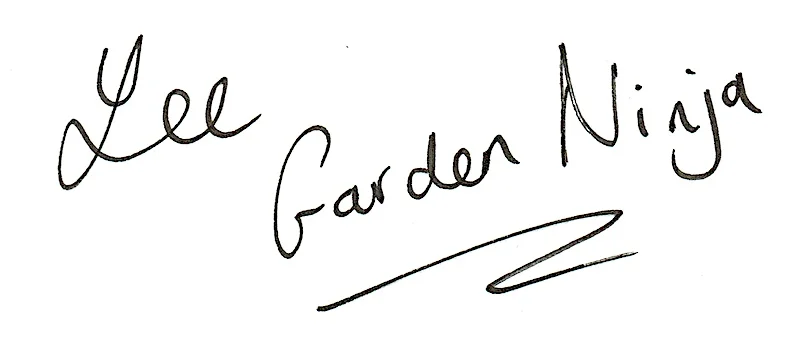


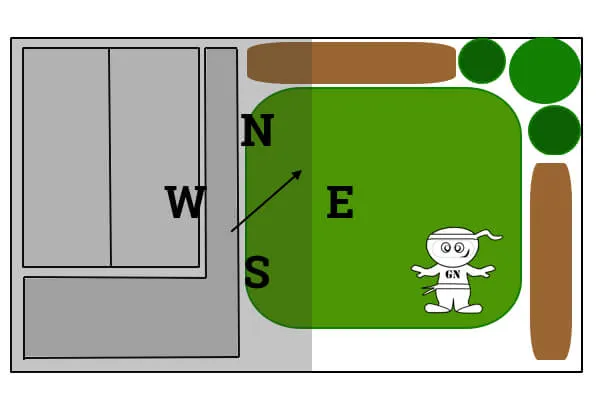
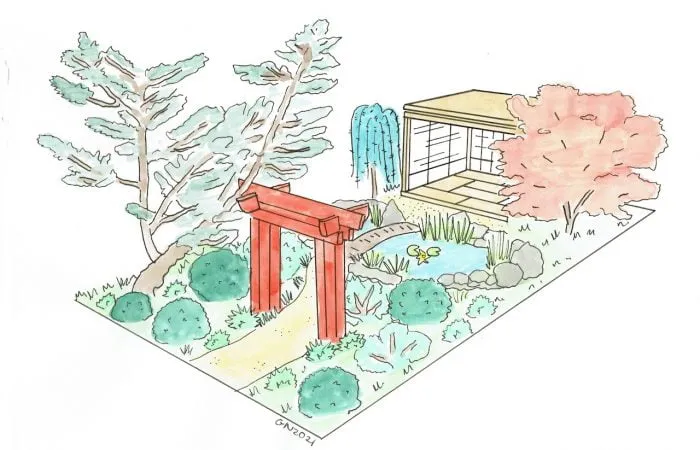
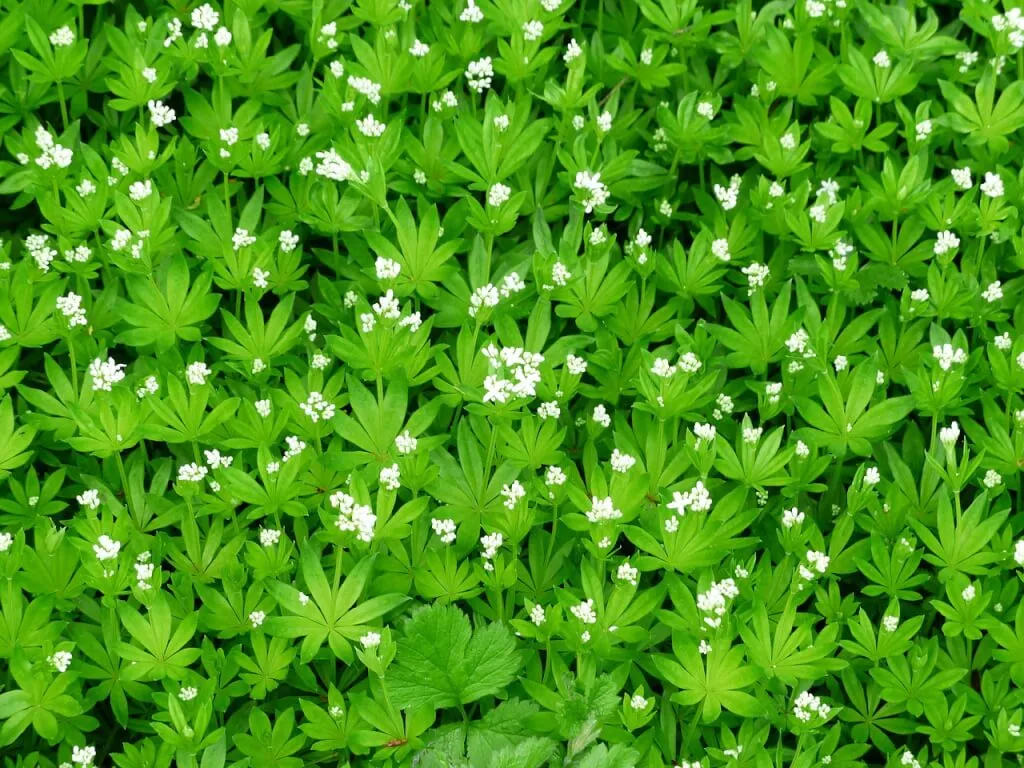
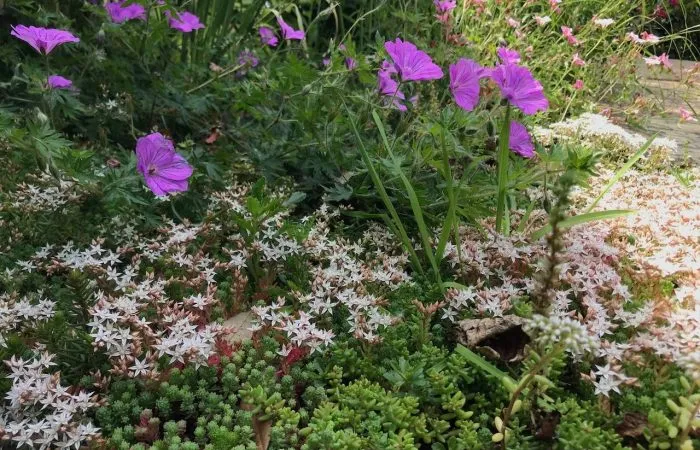
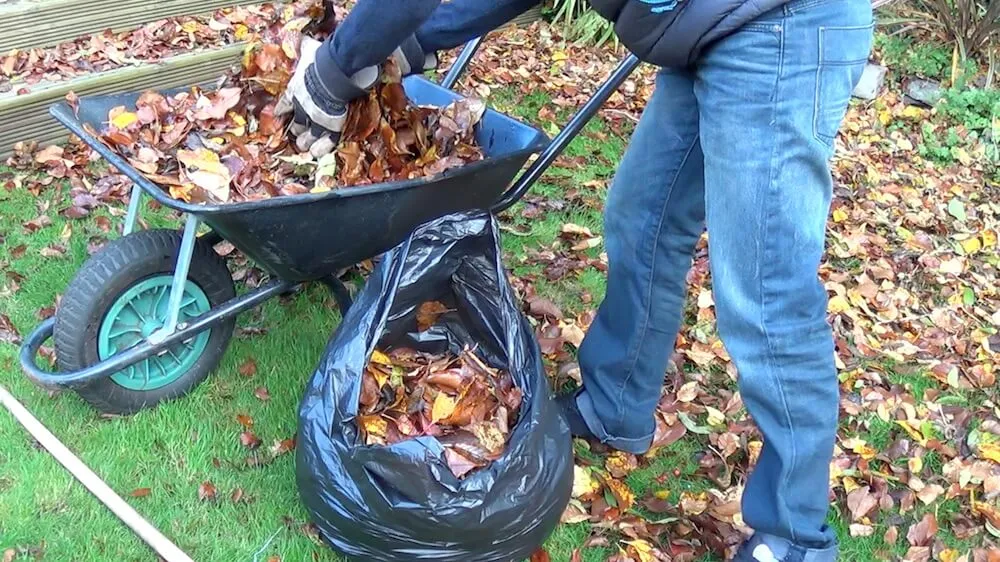


JOIN THE NINJAS
Join our Ninja community for extra guides & Discount Codes for Online Garden Courses!